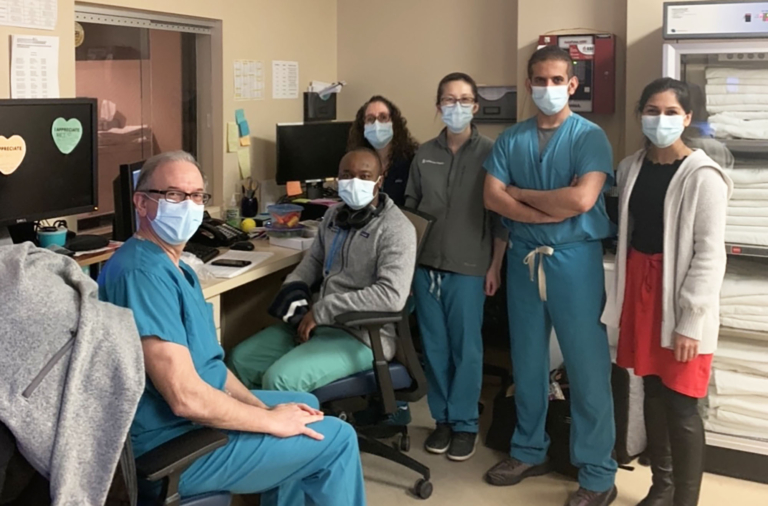Dr. William Morrison, an Interventional Musculoskeletal Radiologist and the Past President of the Society of Skeletal Radiology, has been an important catalyst for advancements within musculoskeletal imaging.
With over 25 years of experience, his contributions spanning medical device development, authoring over 90 chapters and 170 scientific publications, and writing or editing 13 books have established him as a leading expert in the field. We sat down with Dr. Morrison to learn more about his dedication to improving patient care and to find out what’s on the horizon. From a revolutionary technique to repair partially torn tendons without surgery to the role of AI in musculoskeletal radiology, Dr. Morrison opens up about his latest projects and offers a glimpse into what we can expect to see in the future.
[DocPanel] What inspired you to get into the field of musculoskeletal radiology?
[Dr. Morrison]
I was attracted to radiology very early on, from the first time I saw an MR image – it was around 1985, and I was in college at the time. The image I saw was a sagittal T1w slice of the brain… I thought that was pretty amazing! I had always been a very ‘visual’ person, into artwork and graphic novels. When I started radiology residency I met a very dynamic young staff member from the newly established MSK division, Mark Schweitzer. He was inspiring and motivating, and our first research project on osteomyelitis won an award at RSNA. From there I was sold. It was MSK all the way.
[DocPanel] In 2019 you developed a revolutionary technique to repair partially torn tendons back to bone through a needle. Can you share a bit about Trace Ortho? How has it transformed tendon repair?
[Dr. Morrison]
I have always been interested in improving patient care – efficiency, safety, taking things from the operating room to the outpatient setting. When I was in the Air Force I was performing a good deal of spine and MSK intervention, and time after time I’d think “I wish I had a steerable needle to go around dangerous areas instead of through them”- so I designed one, flew to Sweden, and pitched the idea to a company that later became Apriomed. They made a prototype overnight, and it worked like a charm. The next morning we drank some Aquavit, ate some herring, and signed a contract- it’s now on the market.
Years later, after having two painful rotator cuff surgeries myself, and having watched my mother experience difficulty walking due to tendon tears at her hips, I decided, “we should be able to repair partially torn tendons through a needle.” This time around I made a prototype myself (in my garage, from Home Depot materials) and it also worked like a charm. I started my own company to take the concept to market. Our engineered prototype implant, placed through a needle using imaging guidance, has performed as well as standard suture anchors in bench testing. Our first clinical application, expected to hit the market in 2022, will be repair of gluteus medius and minimus tendons in older patients like my mother, in order to reduce pain and prevent gait disturbances and falls. Eventually, I think we will be able to treat many other common conditions such as rotator cuff partial tear, epicondylitis at the elbow, and maybe even Achilles and patellar tendon partial tears.
[DocPanel] What new developments within musculoskeletal imaging are you most excited about?
[Dr. Morrison]
I see amazing potential for Radiologists to help detect disease before there is a significant deficit – and to intervene using minimally invasive methods. From arthritis to cancer, the marriage of advanced imaging methods and AI with new, innovative interventional techniques could revolutionize medical care, and make it less expensive as well. We are making diagnoses earlier and earlier, and AI will help us to better predict disease.
[DocPanel] Do you see AI in the future of musculoskeletal radiology? If so, what role do you see it playing?
[Dr. Morrison]
Yes; AI will be an essential part of medical practice and radiology in the future. On the technologist side, improving exam scheduling and image quality; on the information side, enhancing the electronic medical record and making relevant information easier to access; and on the diagnostic side, automating certain tasks and enhancing others- while making reporting and communication more efficient.
[DocPanel] What are some of the biggest challenges radiologists and providers face today within musculoskeletal imaging?
[Dr. Morrison]
The challenge is dealing with the volume of work while maintaining the extremely high quality of medical care that our patients and referring doctors expect from us. We can succeed by efficiently leveraging technology and subspecialty expertise while treating each patient as a VIP.
Dr. William Morrison has been in academic medicine for over 25 years, specializing in musculoskeletal imaging and intervention. The Past President of the Society of Skeletal Radiology, he is currently a reading radiologist at DocPanel and works closely with the Orthopedic Surgeons at Rothman Institute. Dr. Morrison is passionate about problem-solving and medical device development. While in the Air Force, he developed the first steerable needle enabling active guidance around objects within the body. Most recently, he developed Trace Ortho, the first device for tendon reattachment that does not require surgery.
NEXT UP: Patient Story Feature – Hip Labral Tear Second Opinion – Patient Navigates Post Surgery Pain
